I would call it misnamed. The Arizona Sonora Desert Museum. OK, so it’s in Arizona and it’s in the Sonoran Desert. That’s fine. It’s the word “Museum” that I think doesn’t fit. Botanical Garden? Arboretum? Zoo? Wildlife Park? Nature Conservancy? How about all of the above?
This year we discovered the Museum quite by accident. We planned a visit to Saguaro National Park, and we knew there would be more to do in the Tucson area than the National Park. The Interweb told me that just down the road from the Park are two popular attractions, the Old Tucson Studios Theme Park and the above mentioned Desert Museum. Drilling down on the museum’s website, I discover they also have an art gallery, natural history museum and aquarium. I will have to check them out on our next trip. The zoo and botanical gardens became the focus of our two visits there.
The opening image and the image above both feature views of the nearly 100-acre (40 ha) botanical garden with a myriad of interpreted walking paths through various desert habitats. The views of the surrounding desert were shrouded in clouds on our first visit there, giving respite from the normally strong desert sun. Slather on the sunscreen anyway, you can be burned through even these layers of cloud.
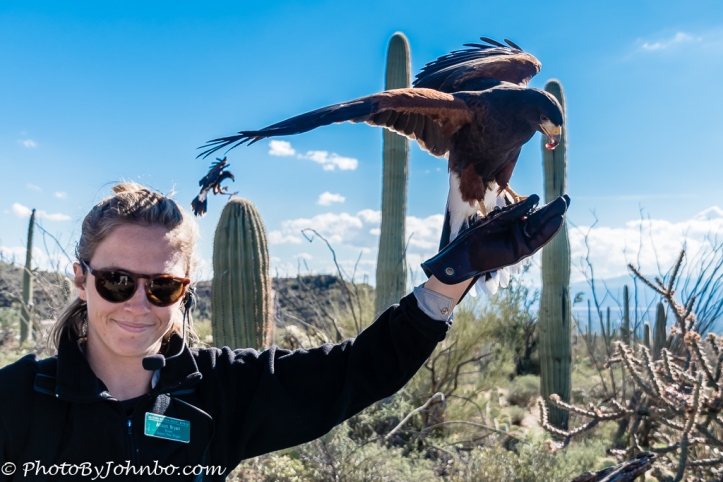 The museum hosts several Live Animal Presentations. Their website provides a schedule of activities. Plan your visit in the winter, October through March for one of the best, the Raptor Free Flight presentations. During each show, at least three varieties of raptors provide demonstrations of their flying and hunting skills. Twice a day, visitors are treated to close-up demonstrations of these beautiful birds. In the image above, one of the trainers provides a reward to a Harris Hawk while another hawk lands on a saguaro. Next week, my entire Travel Tuesday post features a large gallery of images from the Raptor Free Flight shows, and a couple of tips on how best to enjoy the presentation.
The museum hosts several Live Animal Presentations. Their website provides a schedule of activities. Plan your visit in the winter, October through March for one of the best, the Raptor Free Flight presentations. During each show, at least three varieties of raptors provide demonstrations of their flying and hunting skills. Twice a day, visitors are treated to close-up demonstrations of these beautiful birds. In the image above, one of the trainers provides a reward to a Harris Hawk while another hawk lands on a saguaro. Next week, my entire Travel Tuesday post features a large gallery of images from the Raptor Free Flight shows, and a couple of tips on how best to enjoy the presentation.
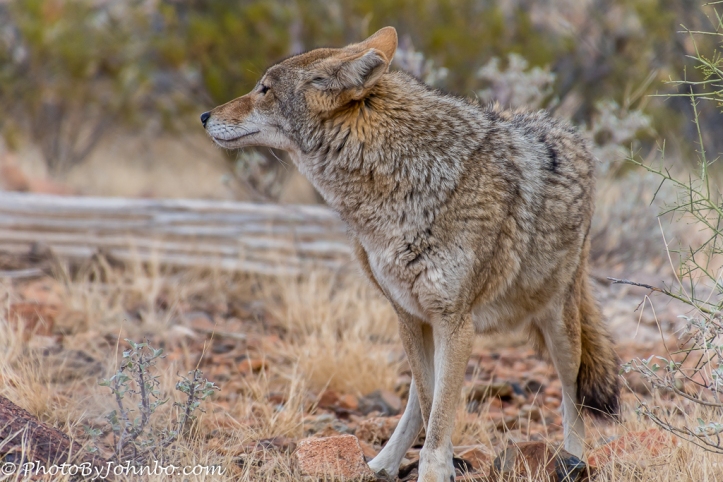 This post features a gallery of images captured in the natural habitat zoo. The view of most animals is unencumbered by the view of an enclosure. The animal living areas protect the animals from the viewers and vice versa. The coyote exhibit houses several specimens including this beautiful example in the image above.
This post features a gallery of images captured in the natural habitat zoo. The view of most animals is unencumbered by the view of an enclosure. The animal living areas protect the animals from the viewers and vice versa. The coyote exhibit houses several specimens including this beautiful example in the image above.
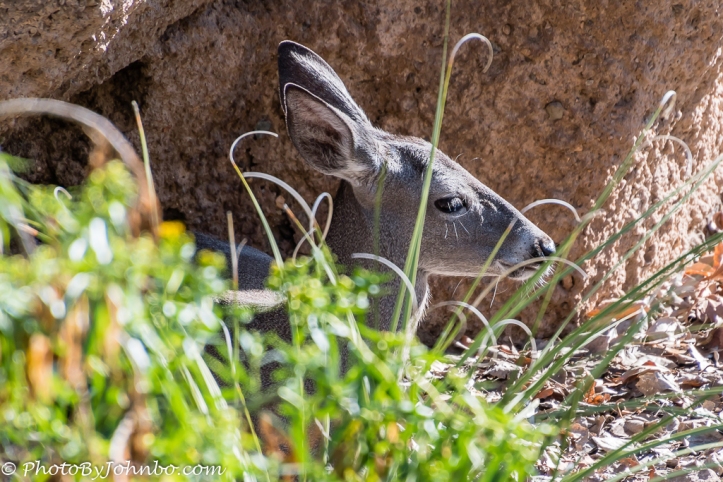 Sometimes you have to look hard in the enclosure to find the resident at home. There are “private” areas and there are areas of shade that protect the residents from the hot Arizona sun. The mule deer was standing just behind a large planted area in the photo above.
Sometimes you have to look hard in the enclosure to find the resident at home. There are “private” areas and there are areas of shade that protect the residents from the hot Arizona sun. The mule deer was standing just behind a large planted area in the photo above.
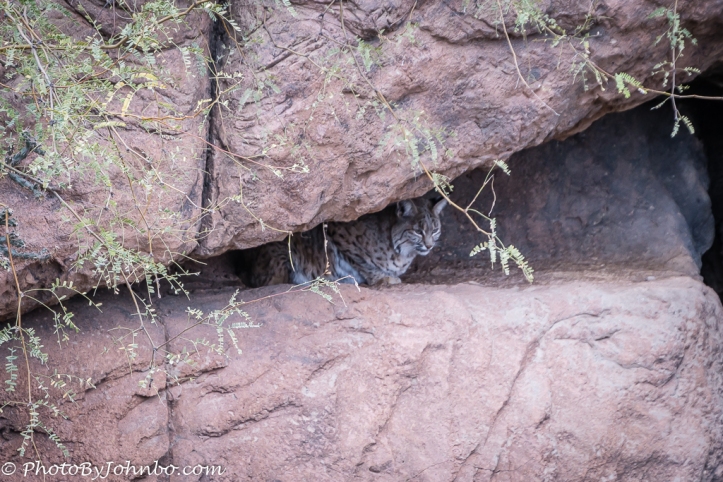 The bobcat exhibit is tall and rocky. At first I thought the two bobcats were out of view in their private area. Then I noticed some of the other visitors pointing up along the high rock wall. Tucked into a crevice, a bobcat was resting in the shade of a giant boulder. The gallery of images included here feature only a small percentage of the animals in the museum’s zoo area. Click on an image to enlarge it and to scroll through the gallery.
The bobcat exhibit is tall and rocky. At first I thought the two bobcats were out of view in their private area. Then I noticed some of the other visitors pointing up along the high rock wall. Tucked into a crevice, a bobcat was resting in the shade of a giant boulder. The gallery of images included here feature only a small percentage of the animals in the museum’s zoo area. Click on an image to enlarge it and to scroll through the gallery.
John Steiner

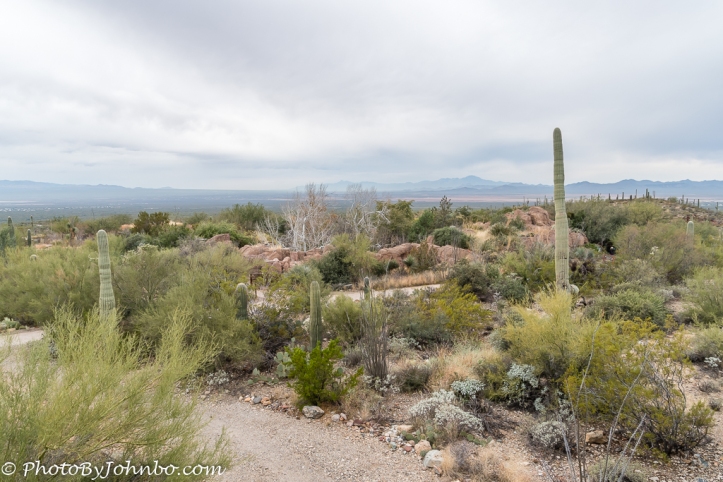
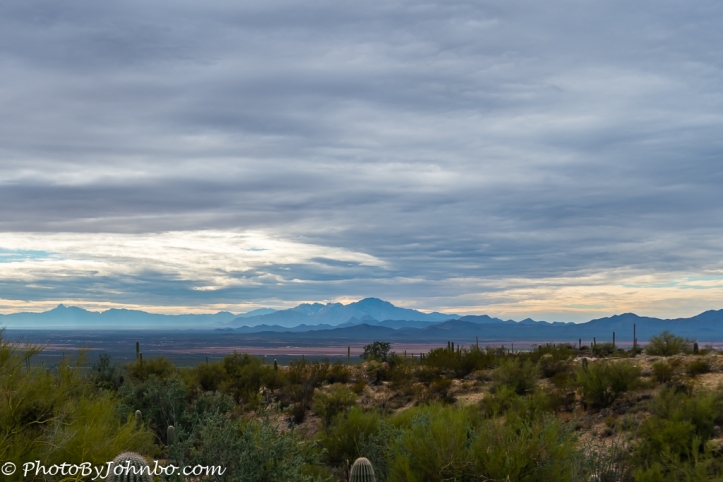













Awesome post. Really like it. We are also working on a new travel blog. Check our posts at at https://10tips.in Follow us if you find it interesting. Cheers 👍
Already there. Thanks for stopping by!
You got lots of beautiful shots! Looks like a great place to visit.
Indeed. It is a great place. Went back twice in less than a month! More pics next week.
Sounds like a worthy day trip!
Indeed! Wait until you see the Raptor Flight shots next week. Great fun!